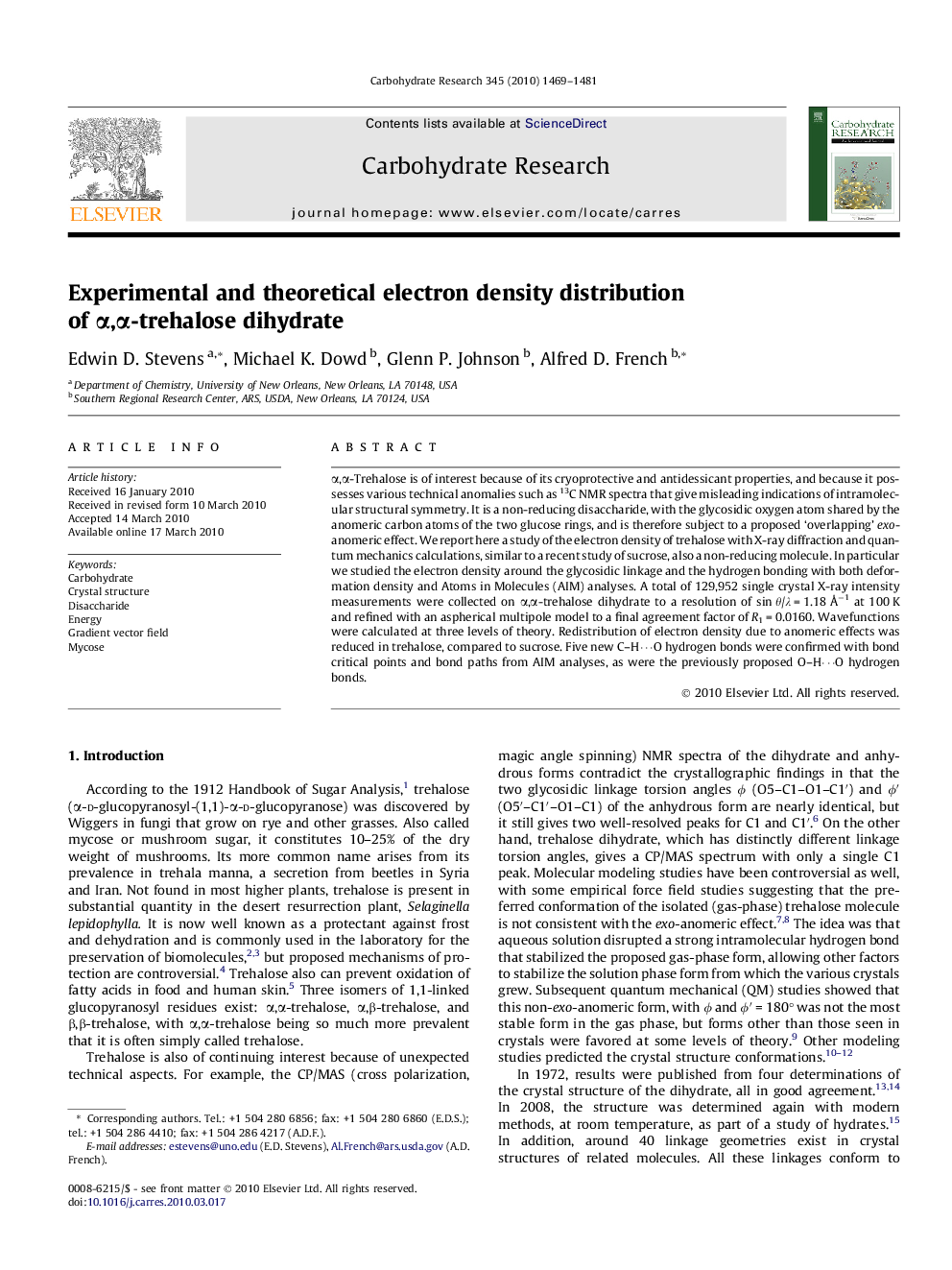| کد مقاله | کد نشریه | سال انتشار | مقاله انگلیسی | نسخه تمام متن |
|---|---|---|---|---|
| 1390664 | 983117 | 2010 | 13 صفحه PDF | دانلود رایگان |

α,α-Trehalose is of interest because of its cryoprotective and antidessicant properties, and because it possesses various technical anomalies such as 13C NMR spectra that give misleading indications of intramolecular structural symmetry. It is a non-reducing disaccharide, with the glycosidic oxygen atom shared by the anomeric carbon atoms of the two glucose rings, and is therefore subject to a proposed ‘overlapping’exo-anomeric effect. We report here a study of the electron density of trehalose with X-ray diffraction and quantum mechanics calculations, similar to a recent study of sucrose, also a non-reducing molecule. In particular we studied the electron density around the glycosidic linkage and the hydrogen bonding with both deformation density and Atoms in Molecules (AIM) analyses. A total of 129,952 single crystal X-ray intensity measurements were collected on α,α-trehalose dihydrate to a resolution of sin θ/λ = 1.18 Å−1 at 100 K and refined with an aspherical multipole model to a final agreement factor of R1 = 0.0160. Wavefunctions were calculated at three levels of theory. Redistribution of electron density due to anomeric effects was reduced in trehalose, compared to sucrose. Five new C–H⋯O hydrogen bonds were confirmed with bond critical points and bond paths from AIM analyses, as were the previously proposed O–H⋯O hydrogen bonds.
Interactions of a water molecule in trehalose. Three O–H⋯O hydrogen bonds and three C–H⋯O bonds are shown. Small red spheres represent bond critical points; dashed lines are for bond paths of hydrogen bonds. Trehalose molecules are represented by fragments such as methanol.Figure optionsDownload as PowerPoint slide
Journal: Carbohydrate Research - Volume 345, Issue 10, 2 July 2010, Pages 1469–1481